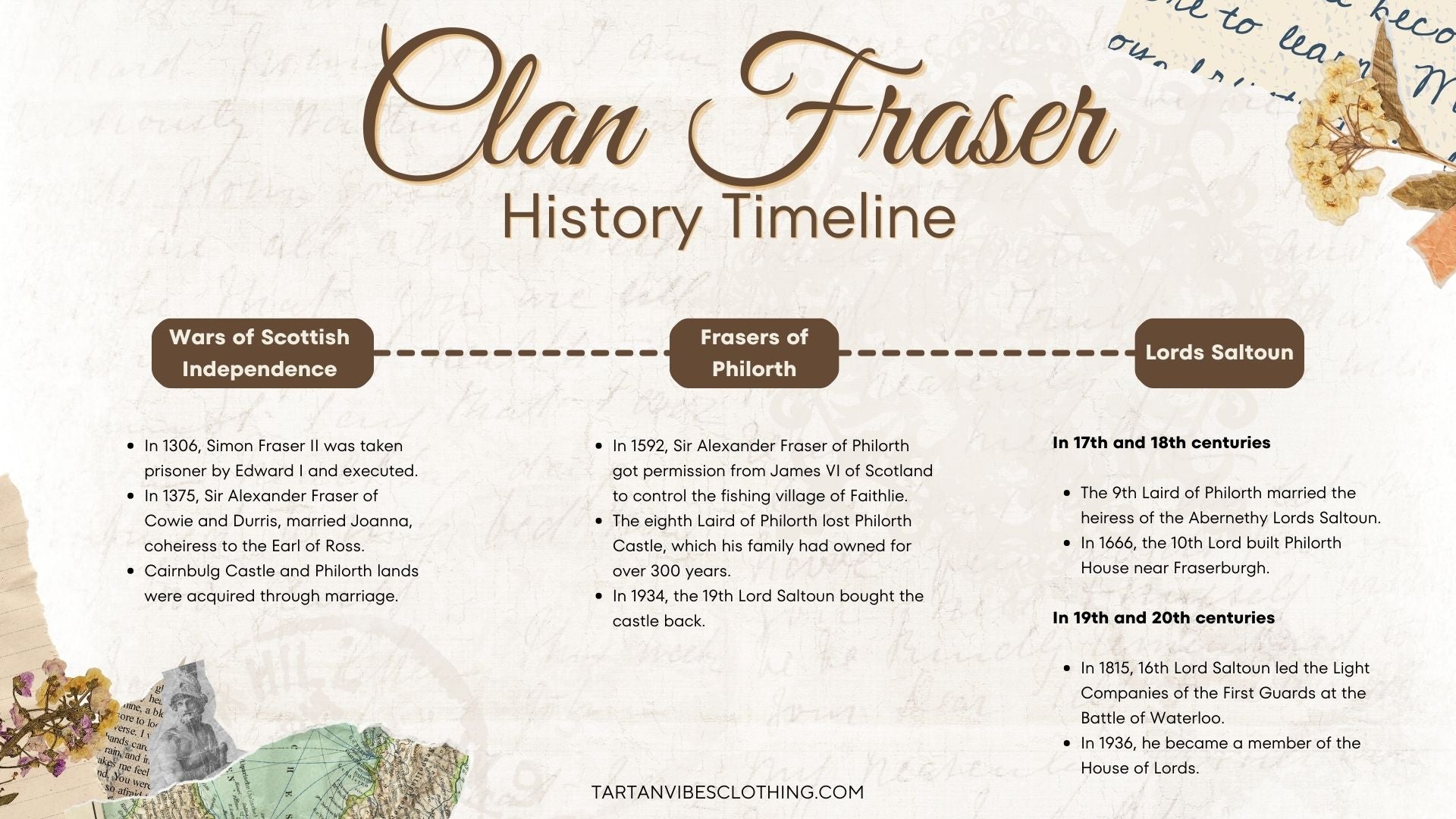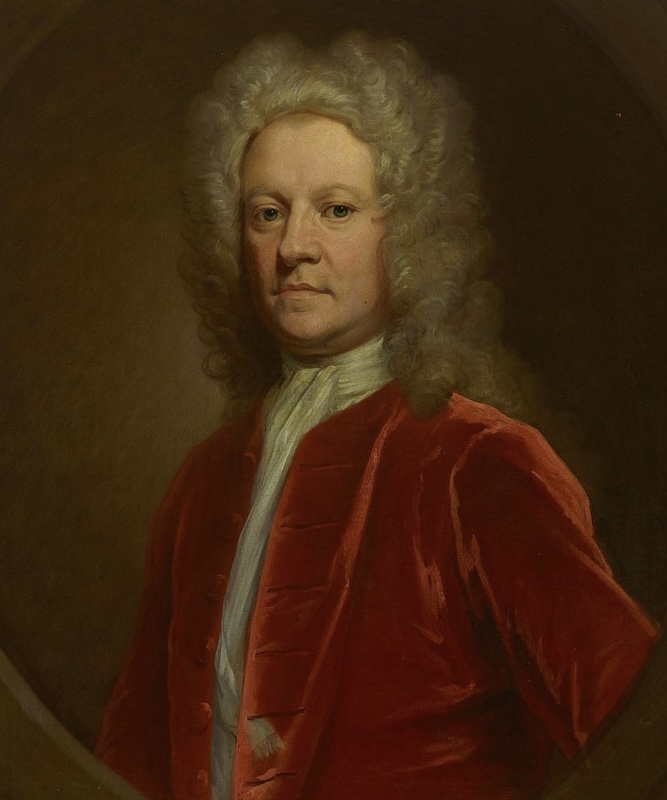Table of Content
I. Introduction
Clan Fraser, one of Scotland's most renowned and influential clans, has left an indelible mark on Scottish history. From their origins in the Scottish Lowlands to their involvement in pivotal historical events, the Frasers have significantly shaped the nation's past and present.
This article delves into the key Clan Fraser Places that have shaped the clan's rich heritage and highlights the enduring landmarks that continue to celebrate their contributions to Scottish culture.
A. Clan Fraser Places: The Origin of Clan Fraser
The exact origins of the surname Fraser are still unknown, and different theories have been suggested over time. One theory proposes that the Frasers originated from Plantagenet Anjou in France. However, the Oxford Dictionary of Family Names (2016) questions this idea, as France has no corresponding place names for the earliest spellings like de Fresel, de Friselle, and de Freseliere. Instead, it suggests that the name could have been altered by Anglo-French scribes from a Gaelic source, resulting in Fraser.

Another theory connects the name to the French patronymic Fresel, which meant ribbon or braid in Old French and likely referred to merchants then. While the surnames Fresel and Frezel are now linked to Normandy and Artois/French Flanders, not Anjou, due to their historical connections with the Plantagenets, some linguistic theories associate Fraser with fraise, which means strawberry in French. The first documented appearance of a Fraser in Scotland dates back to approximately 1160 when Simon Fraser owned land at Keith in East Lothian.
B. Clan Fraser Places: Clan Fraser History

1. Wars of Scottish Independence
Generations later, Simon Fraser was captured and executed by Edward I of England in 1306 while fighting for Robert the Bruce. Alexander Fraser of Cowie, related to Simon, became Bruce's chamberlain and married Bruce's sister, Mary.

Sir Simon Fraser, brother of Alexander Fraser, is an ancestor of the chiefs of Clan Fraser of Lovat. His grandson, Sir Alexander Fraser of Cowie and Durris, solidified his position by marrying Joanna, the Earl of Ross's younger daughter and co-heiress, in 1375. This marriage led to him gaining Cairnbulg Castle and Philorth lands.
2. Frasers of Philorth

In 1592, James VI of Scotland gave Sir Alexander Fraser of Philorth charters for Faithlie village, now known as Fraserburgh. He was allowed to start a university there, but it didn't happen due to religious issues. The eighth Laird of Philorth constructed Fraserburgh Castle, later transformed into Kinnaird Head lighthouse. This led to financial problems, causing the family to lose Philorth Castle after owning it for over three centuries. It wasn't until 1934 that the 19th Lord Saltoun repurchased the castle.
3. Lords Saltoun
In 17th and 18th centuries
The 9th Laird of Philorth married the heiress of the Abernethy Lords Saltoun. Their son Alexander Fraser became the 11th Lord Saltoun. Alexander was injured in the Battle of Worcester in 1651 but saved by his servant, James Cardno. In 1666, the 10th Lord constructed Philorth House close to Fraserburgh, where they resided until it was destroyed by fire in 1915.

Sir Alexander Fraser of Durris was Charles II's physician and studied at Aberdeen. He joined the king during his 1650 campaign and later served in the Scottish Parliament after the Restoration, mentioned in Samuel Pepys' diaries. Unlike their distant relatives in Clan Fraser of Lovat, who supported the Jacobites, the Fraser family stayed out of the Jacobite uprisings.
In 19th and 20th centuries
In 1815, the Light Companies of the First Guards were under the command of the sixteenth Lord Saltoun at the Battle of Waterloo. Following that, Lord Saltoun of the nineteenth century was captured and held as a prisoner in Germany during World War I. In 1936, he became a member of the House of Lords and strongly supported the Royal National Lifeboat Institution.
📜 Please also see more of the Chronicles of Clan Fraser History: Tales of Valor and Virtue
II. Clan Fraser Places: Key Locations Associated with Clan Fraser
A. Lovat
Lovat, located in the Highlands of Scotland, has been the ancestral home of the Frasers of Lovat since the 13th century. This region, situated near Inverness, has played a central role in the clan's history and development. Lovat's historical significance is profound. Robert the Bruce granted it to Sir Simon Fraser in 1316. It served as the primary seat of the Lords Lovat and became the center of Fraser power in the Highlands. This rich history has cemented Lovat's place as a pivotal location for the clan, reflecting its enduring legacy and influence in Scottish history.

The original Lovat Castle, a formidable fortress built in the 13th century, was central to protecting the Fraser lands. However, it was destroyed in the aftermath of the Jacobite Rising of 1745. In the 19th century, it was replaced by Beaufort Castle, which stands as a testament to the clan's resilience and heritage. Today, Lovat continues to be closely associated with Clan Fraser. It is home to the current Lord Lovat and serves as a site for clan gatherings and events. The region remains a beacon of the heritage and traditions of the Frasers of Lovat, preserving their rich history for future generations.
B. Castle Fraser
Castle Fraser, located in Aberdeenshire, is one of the most iconic castles associated with Clan
Fraser. This magnificent structure is a testament to the clan's power and influence in the Lowlands of Scotland. Construction of the castle began in 1575 and was completed in 1636, exemplifying the Z-plan design. Castle Fraser was home to the Frasers of Muchalls, later known as Castle Fraser, and witnessed significant events during the Covenanter period. In the 20th century, it was restored by the 1st Viscount Cowdray.

Today, Castle Fraser is essential in preserving and sharing Fraser's history. Open to the public as a National Trust for Scotland property, it hosts exhibitions on clan history and Scottish culture, making it a popular destination for Fraser descendants and history enthusiasts.
C. Beauly Priory

Beauly Priory, founded in 1230, has long been associated with Clan Fraser and serves as the burial place for many clan chiefs and notable members. Founded by John Bisset of the Aird for Valliscaulian monks, it became an important spiritual center for the Frasers of Lovat.
The Priory features a Gothic-style church, cloisters, and monastic buildings, with ornate tomb effigies of Fraser chiefs. It has witnessed significant historical events, including a visit by Mary, Queen of Scots in 1564. The Priory was secularized during the Reformation and partially destroyed, but it was later preserved as a historic monument, continuing to symbolize the Fraser legacy.
D. Philorth Castle (Cairnbulg Castle)

Philorth Castle, also known as Cairnbulg Castle, is the ancestral seat of the Frasers of Philorth, who later became the Lord's Saltoun. Initially built in the 13th century, the castle was rebuilt and expanded in the 16th century, serving as the ancestral home of the Frasers of Philorth for over 400 years. Its coastal location provided strategic defense against sea-based threats, making it a center of Fraser power in Aberdeenshire and a key location during the Wars of Scottish Independence.
Today, Philorth Castle remains significant for Clan Fraser, as it is privately owned by the Saltoun family and occasionally opens for public tours. It is also an essential location for clan gatherings and events, preserving its historical legacy.
E. Oliver Castle
Though now in ruins, Oliver Castle was once an essential stronghold for Clan Fraser in the Scottish Borders. Initially built in the 12th century, it came into Fraser's possession in the 13th century and played a significant role in border conflicts with England. The castle was destroyed by English forces in 1297, but the Frasers rebuilt and fortified it, only for it to be eventually abandoned in the 17th century.

Today, the ruins of Oliver Castle provide valuable insights into medieval Scottish fortifications. Excavations have revealed its layout and construction, making it a site of ongoing archaeological research. The castle is protected as a scheduled monument, preserving its historical legacy for future generations.
F. Pitsligo Castle
Pitsligo Castle, located in Aberdeenshire, was the seat of the Frasers of Pitsligo, a cadet branch of the clan. Built in the 15th century, it was expanded and fortified in the 16th and 17th centuries. The castle was home to the Forbes family, who later took the name Fraser-Forbes. Architecturally, Pitsligo Castle features an L-plan tower house design, a walled courtyard, and defensive structures, with Renaissance-style additions from later centuries.
Pitsligo Castle played a notable role in the Jacobite Risings, with Alexander Forbes, the 4th Lord Pitsligo, being a prominent Jacobite supporter. Following the defeat of the Jacobites in the 1745 Rising, the castle was forfeited and gradually fell into ruin. Despite its dilapidated state, Pitsligo Castle remains an important historical site, reflecting the turbulent history and architectural heritage of the Fraser-Forbes family.
J. Beaufort Castle
Beaufort Castle, built in the 19th century, replaced the original Lovat Castle as the seat of the Frasers of Lovat. Constructed between 1834 and 1880, it was built on the site of a medieval castle dating back to the 11th century and was designed in the Scottish Baronial style. The castle boasts impressive baronial architecture, extensive grounds, and gardens, incorporating elements from the earlier fortress.

Beaufort Castle continues to be an important symbol of Clan Fraser. Until 1995, it was the private residence of the Lovat family. Though now privately owned, it remains a significant landmark, representing the enduring legacy of the Frasers of Lovat.
III. Conclusion
The story of Clan Fraser is a rich tapestry woven with threads of courage, loyalty, and resilience. From their origins in medieval Scotland to their significant roles in shaping modern history, the Frasers have left an indelible mark on the world stage. The clan's legacy is not merely one of battles and political intrigue but also cultural contributions, scientific advancements, and literary achievements. This vibrant history is reflected in the many Clan Fraser Places, each adding to the enduring narrative of the Frasers' impact and influence.
Frequently Asked Questions
Where is Castle Fraser located?
Castle Fraser is located in Aberdeenshire, Scotland.
What is the significance of Beauly Priory?
Beauly Priory is significant as a burial site for many Fraser clan members and a symbol of their historical presence in the region.
What are the branches of the Fraser clan?
The Fraser clan has two branches: The Frasers and the Frasers of Lovat. The latter is a powerful Highland clan with a different chief than the Frasers, but both branches have the exact same origins and ancestry.
What is the Clan Fraser's motto?
The Fraser clan motto is "Je Suis Prest" (I Am Ready), and the clan crest is a buck's head.













As a Fraser I found this article to be accurate and well put together. Great job Aimee!